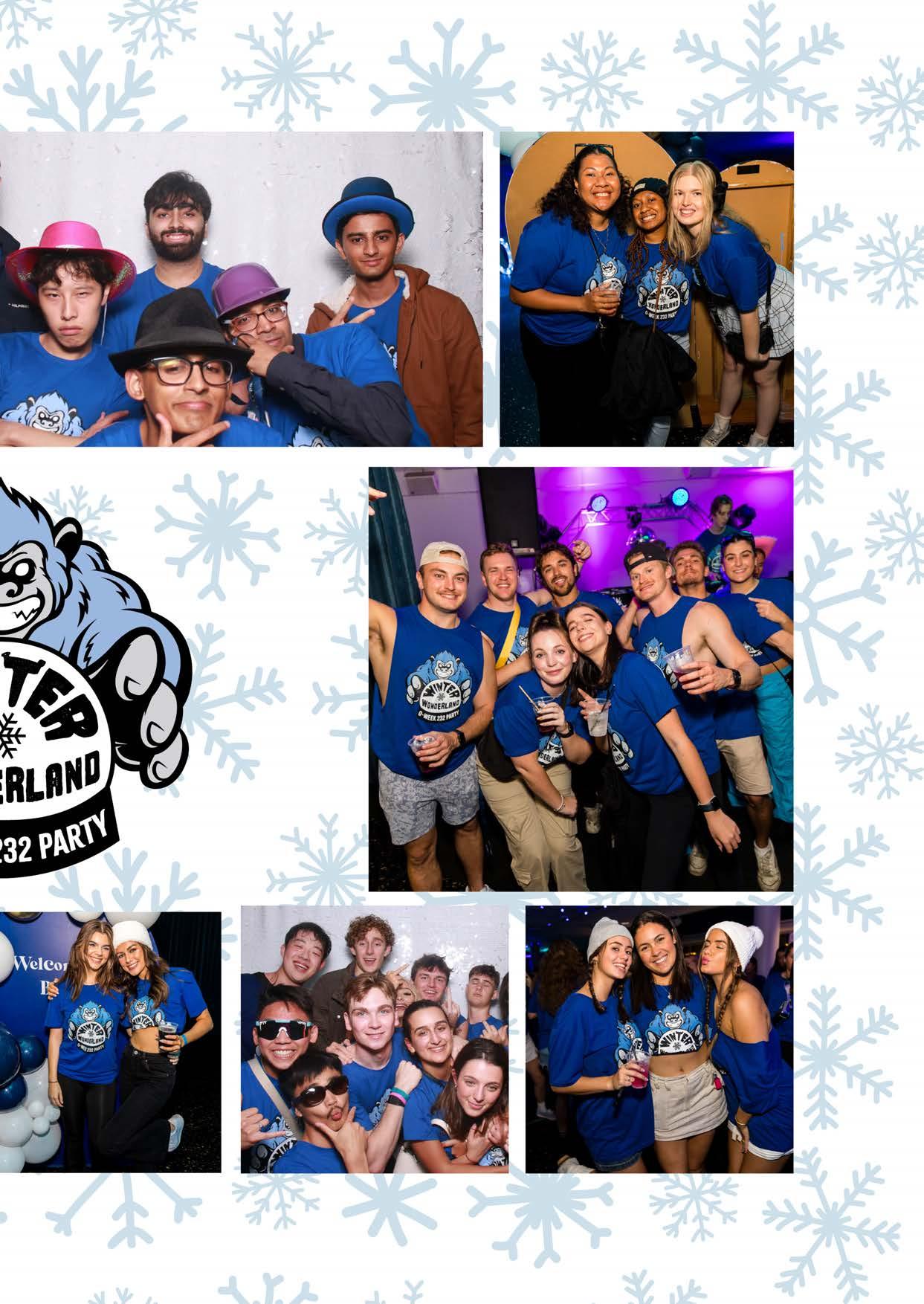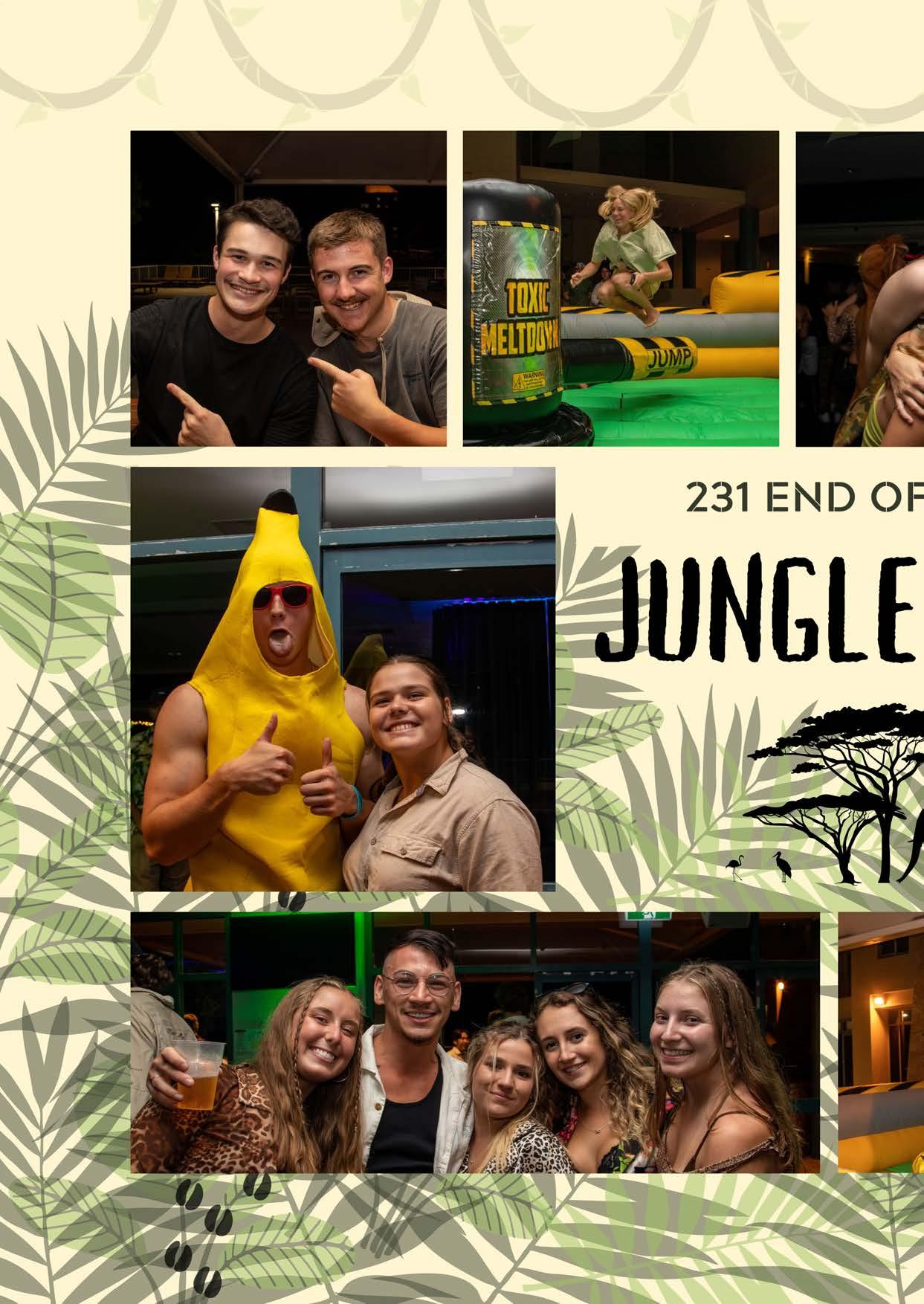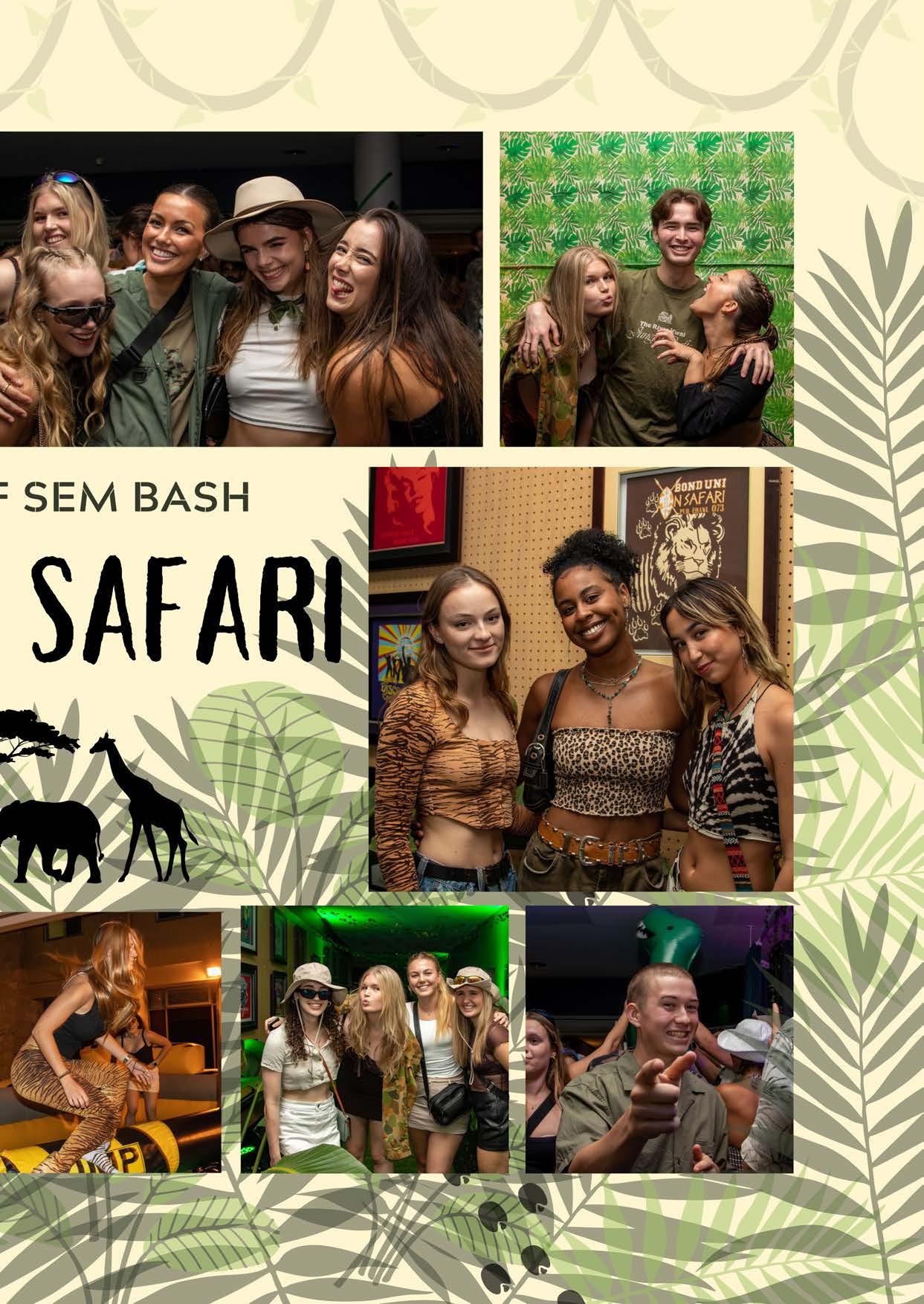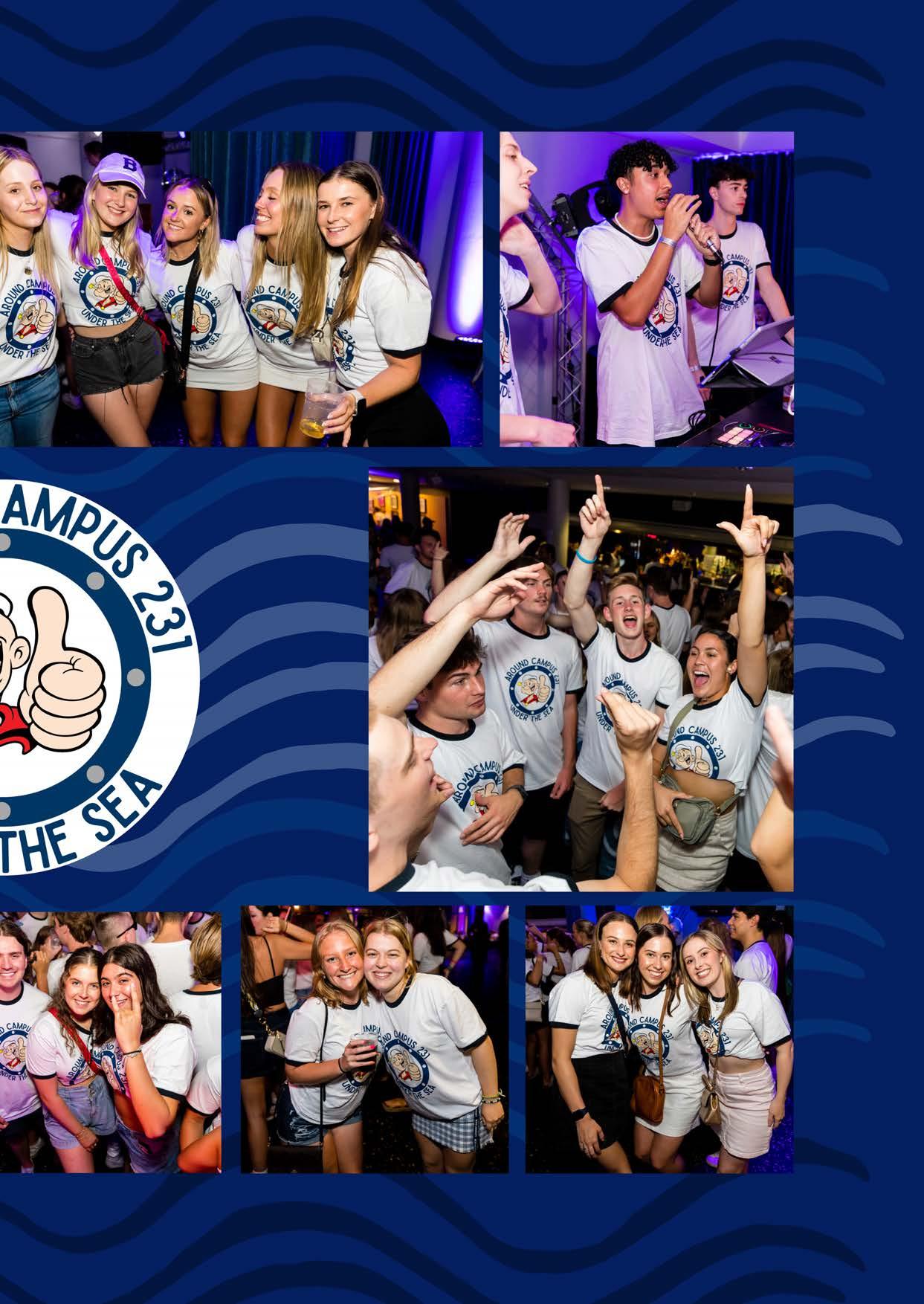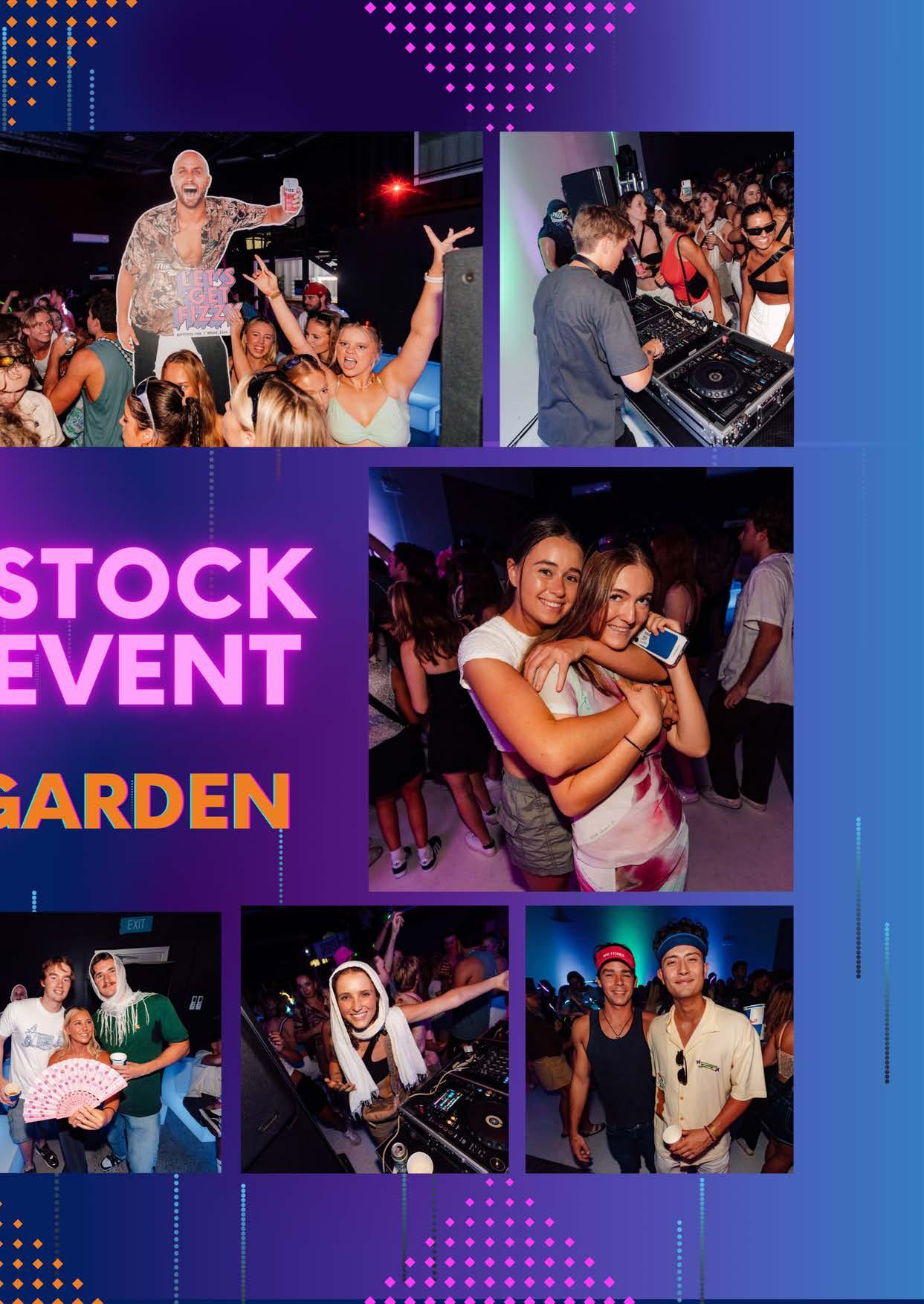BOUND MAGAZINE 231







Thank you to the following Bondies for their creative contribution to BOUND.

SANDRA ADIARTE
JOSIAH NEAL
CLINTON WALSH
FLETCHER SHEARMAN
LILY PETTIT
CAMERON VELE
TAYLA FAWCETT
ANDREW HARRIS
MATHEW HOANG
ANGUS KITCHIN
SAXON MCGREGOR
ELKA DEVNEY
MAGGIE (YAN WANG)
A special mention and thank you our BOUND sub-editor.
MAHLI LEIGHTON
The views expressed in BOUND Magazine are soley those of the author. These views do not necessarily reflect those of BUSA nor Bond University.

When your previous Editor-In-Chief, Elka, handed me the responsibility of forming a Travel edition for BOUND, I couldn’t have been more excited to collate the articles from our student community. I thought this edition couldn’t have come at a better time as international students have returned, and travel is starting boom again. Through this edition I hope you enjoy the broad range of adventures that members of our student community have embarked on and get to see the vast array of experiences they have learnt.
As we delve into the immersive realm of travel, BOUND is set to take you on an extraordinary journey, unveiling the secrets of the world’s most breathtaking destinations. Whether you’re an avid adventurer or a dreamer yearning for new horizons, our aim is to transport you to far-flung lands, tantalising your senses with captivating stories and awe-inspiring visuals.
If you are wondering where to begin check out Touring Our Terrain on page 13 or A World Wonder at Home on page 7 to discover some of the Gold Coast’s hidden treasures. Or take yourself across the globe from Paddington to Perth through the words of Andrew Harris. Immerse yourself in Saxon’s journey afar to learn about humanitarian affairs, or get an insight into the New Colombo Scholarship Program on page 19. But most importantly keep yourself safe while embarking on your travels by reading Sandra Adiarte’s top 20 tips for safe travels.
I want to express my sincere gratitude to all of you, our passionate readers and writers, for your unwavering support. It is your thirst for adventure and your love for the art of travel that fuels our editorial endeavours. Your feedback and suggestions have been invaluable, shaping BOUND into the vibrant and captivating publication that it is today.
With each edition of BOUND, we aim to inspire, to uplift, and to ignite the wanderlust within you. So, buckle up and prepare for an unforgettable journey as we traverse the globe, one page at a time.
Until next time,

It is now 2023 and most, if not all, travel restrictions have been somewhat lifted. Whether you are travelling interstate or internationally, those long haul flights, extensive road trips, or picturesque cruises, I know there will be a time that you will want to spend alone, relaxing. For me, music is my go too. Chuck in my air pods, turn on noise cancellation, pull out Spotify, and completely zone out.
Here I have compiled my current On Repeat playlist which you can enjoy too. There is a mix of everything, and nothing to specific. Obviously, it will not be everyone’s cup of tea, but there will probably be at least one tune in there that you will enjoy. So, when you are traveling this year, pull out this playlist and zone out. Chur, Cameron .



Walking in the streets of a city or town is the best way to discover your holiday destination. You are always able to gather a new perspective grounded in localism rather than tourism, all while staying active and burning calories. Even if you have the option to rent a bike or Uber, I recommend walking to maximise this opportunity.
If you are staying in a hotel, book a hotel with a gym and exercise equipment already there. An in-house gym has evolved into a quintessential feature for nearly all hotels. Also, many hotel booking websites now have filters to distinguish between hotels that do and do not have this amenity.
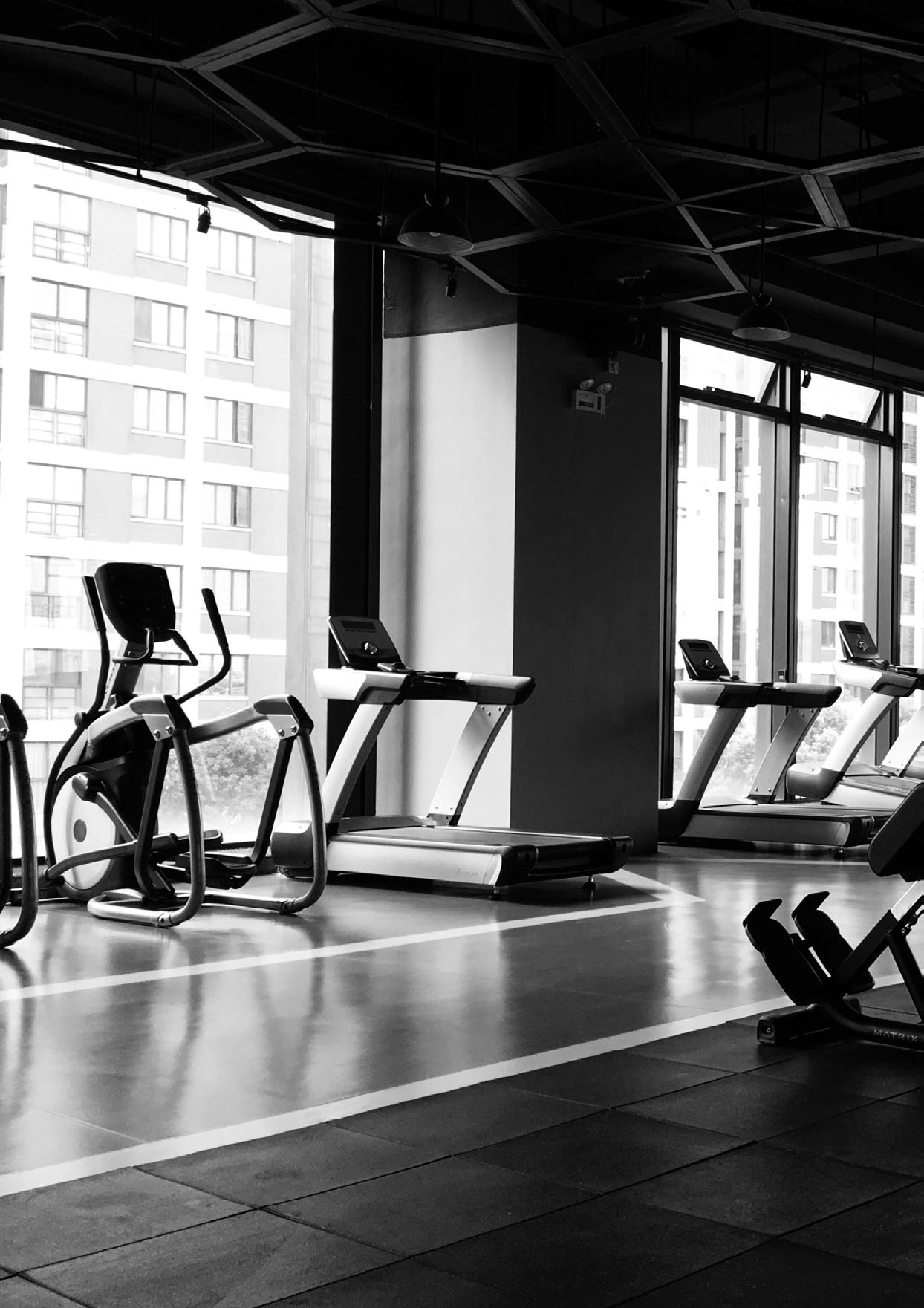 Clinton Walsh & Fletcher Shearman
Clinton Walsh & Fletcher Shearman
Without the constant access of the local gym at home, or a hotel gym, it is important to travel with light equipment so that you can exercise in a similar way inside your hotel, airbnb and hostel. Examples of light equipment include: a skipping rope, a push up board, an ab wheel, resistance bands and sliders.

Outdoor gyms are also available in major city parks to assist with bodyweight work and fundamental movements. While an outdoor gym typically lacks the features of an indoor gym it is a fantastic way to meet the local people. On the other hand, you can run at the local park in various formats, long distance, intervals, sprints - placemarkers of any kind are helpful!
Involving yourself in adventure sports are not only good for the adrenaline rush and scenery, but they can be a good way to burn calories while holidaying. Examples include: white water rafting, hiking, rock wall climbing, mountain biking, surfing. They are also a great way to get out of you comfort zone.
“Do you like scary movies, Bondies?” I sure do! But I’m not talking about the ones with fictional monsters or serial murders; I’m talking about the silent killer we’ve all seen on television screens known as Covid-19. An outbreak of an unknown virus is a horror movie but imagine being a freshly turned sixteen-year-old in an unfamiliar country with a foreign language when this outbreak occurs. Now, this isn’t something I have to imagine, as it’s my horror story. Many people can’t claim to have circled the world five times before they were 3. I may not be one of them, but I can proclaim by age 5, I had traveled around the world three times. Even before I could step on my own two feet, I traveled to various countries. As I’ve grown older, it’s clear to assume I’ve remained on the path of travel, but I would never have believed that the concept would change as we knew it in the next few years.
My story begins in grade 9 of 2018, staring at a bright poster promising its viewers an exciting experience in its exchange program to Spain. As a picky eater with no language experience, this was the experience for me. After a lengthy process and virtually meeting my exchange family, the exchange program dates were moving closer. The poster promised me an experience I’d never forget. If only I had known.
The exchange began with my partner Carmen arriving in late August 2019 for her first six weeks in Canada. A few months later, I finally left in early March 2020 for my six weeks in Spain. While tensions rose over the quickly spreading virus, I toured the sights around both Madrid and Zaragoza. Things were looking bright after my first day of school; nevertheless, on March 14, 2020, over a week after I had arrived, the Government of Spain imposed a sudden lockdown upon its entire country.
With the uncertainty of Spain’s border closing, the exchange agency instructed me to pack my things and informed me of my flight that night. Direct flights to Toronto, Canada weren’t available, so my dad ended up booking a flight to Brighton, England; Also, Canada would likely accept flights from England even if their border closed. With a heartfelt goodbye, I was escorted to the agency, then to the airport. As luck would have it, a miscommunication with the agency and my dad revealed my flight was the next day. Miraculously, my name popped up in the system despite it not being my flight, and I was checked-in minutes before my flight finished boarding. Finally, I was one step closer to getting home despite the uncertain world.
Arriving in Brighton went somewhat smoothly; I just learned not to tell a border patrol officer, “I don’t know how long I’m staying,” even during the start of a literal pandemic. Thankfully, I stayed with my Aunt Yossarian until a flight became available. I had visited Brighton years before, and it was a great visit despite the oncoming pandemic. When a flight became available a week later, my dad quickly booked it. At this time, Justin Trudeau instated that only Canadian citizens and visa holders were allowed to enter Canada. With dual citizenship in Canada and Australia, I should have been able to enter the country scot-free; however, this wasn’t the case then. I’d waited six months for my renewed Canadian passport before embarking on to Spain, meaning I traveled using my Australian passport and would have to have my Canadian shipped before my departure, hopefully. Remember this for later.
I had a temporary Canadian visa attached to my Australian passport for my upcoming flight. With a quick digital look at my documents, I checked myself and my bags without any problems. Saying my goodbyes to Yossarian, I entered to wait for my flight. Upon boarding, the staff instructed me to stand aside to wait for a higher-up due to my passport; however, the brute higher-up later told me I would not be able to board as only Canadian citizens and visa holders could enter. I proceeded to show them the paperwork and explain that I was using a temporary visa; regardless, they didn’t properly examine it, and a boarding staff member instructed that I would need to travel to London to apply and ‘become a Canadian citizen.’ Soon, I became the only remaining traveler yet to board.
The brute of a higher-up was about to escort me out; however, I don’t remember why this came to mind, but I looked up at the higher-up, almost in tears, and asked, “can I please have my luggage then?” The higher-up told me to wait and went back to the boarding desk. The staff spoke amongst themselves until they called me over and told me I was allowed to board the flight. I never received an apology, but I thanked them and boarded my flight. The staff never told me why I was allowed to board at the end, but I have two theories. One, since they legally must give me my luggage, the fine for delaying the flight was more expensive than letting me board. Two, they realized I checked in with my passport and double-checked their system to see that I was in the right. Back then, I didn’t care; I was happy to make it despite numerous obstacles on my journey home.
My story began looking like a horror movie, but most movies of this genre end with a somewhat happy ending. Like most horror movie protagonists, I grew more potent in specific aspects of my life by the end of my story. I learned to speak up for myself, take risks, become more independent, and squash many insecurities. Now, was this a horror story? Yes, and no. There were frightening aspects, but I got to do the one thing I loved: travel. I got to travel to Spain and unexpectedly travel to England. The two-week quarantine after arriving in Canada was worth it!
When Australians reflect upon the idea of extravagant travel, they often envision themselves in lands far abroad, overlooking the world-class natural beauty at their doorstep. The metropolitan bustle of Paris, boastful glamour of Los Angeles, and pristine evergreen of Southern Germany are all high on the ‘must visit’ list for international travellers, yet the aesthetic of domestic destinations closely rivals destinations overseas. Just a few of Australia’s countless destinations will be highlighted and reviewed.

Firstly, Queensland. Home to the 6th natural wonder of the world, Quuensland boasts a range of towns, cities and national parks well worth visiting. The Gold Coast, situated in the southeast of the state, is home to an extensive canal and river system, ideal for boating and jet skiing. Additionally, Burleigh Heads, located on the Gold Coast’s southern end, is famously known for being one of the world’s best surfing destinations, whilst also being suitable for beginner surfers. Renowned for its nightlife, the Gold Coast hosts an abundance of ‘going out options’ ranging from nightclubs in Surfers Paradise to bars and pubs in Burleigh. Furthermore, the Whitsunday Islands in Queensland’s north is a must-see destination. Situated on the edge of the Great Barrier Reef, the Whitsundays are some of world’s most picturesque islands. The Whitsundays hosts warm waters year-round and are suitable for sailing, snorkelling and most water based activities! The Whitsundays can be reached by flying from most east coast cities into either Proserpine or Hamilton Island Airport.
Whilst Tasmania is the nation’s smallest state, there is no shortage of awe-inspiring destinations. Firstly, the island state boasts Lake St Clair National Park, home to Cradle Mountain. This national park can be visited year-round and is often covered in a fresh layer of snow in its winter months. In the summer months between December and February, Cradle Mountain is best for hiking and mountain bike riding. Strahan, a quiet seaside village on Tasmania’s west coast, can be visited to develop a deeper understanding of Australia’s colonial past as the area has historic relics from the 1800s. Furthermore, Strahan is surrounded by lush rainforest and golden beaches. Hobart, Tasmania’s capital, also showcases Australia’s notorious convict past, being home to the Port Arthur penal settlement. Hobart also has all the trappings of a world class city such as museums, art galleries, food markets and the Royal Tasmanian Botanic Gardens. Moreover, the small size of Tasmania allows all destinations to be easily reached by car, making it idealistic for a road trip.
By Angus Kitchin
Deep, deep within the unmistakable heartland of Springbrook, QLD, lays hundreds of natural falls that shine under the western sun with radiance, a forever favourite of the people. With the complete circuit walking track being just over 4 km, Purlingbrooke Falls has a voluptuous waterfall that looks out over the east coast. The forestry reflects the past. It is calm and tranquil with the falls themselves being a popular swimming hole for visitors. The track itself is downhill for the majority of the walk making it easy for those with conditions preventing them from hiking.
Despite the popularity of this hidden jewel, there is always wildlife to see which makes for incredible photography opportunities. On my last visit, I saw a sleepy juvenile diamond python resting in the cool rocks near the falls. As a reptile enthusiast, this was fantastic. Being used to humans, he did not strike or bite, just sat resting in his place even when an unsupervised toddler ran toward him, being stopped just a few metres away. If you plan to stay and revisit it, or other surrounding waterfalls, there are numerous villa hotels available nearby. The stays are gorgeous, a complete contrast to the somewhat scary one-way roads that are riddled through Springbrook. The stays are homely, ancient and reflect a natural beauty that is beastly. As I mentioned, the only downfall is that due to the location within the hills, the roads are winding and not for inexperienced drivers. The stays are mid to high range in price but definitely worth the stay for an escape. If you are a party goer that loves the outdoors the trip into the city isn’t far, located approximately 20 minutes from Surfers Paradise (QLD), where there is a vast amount of food outlets to satisfy your cravings. The glamour of the city isn’t too far away, however just far enough for a weekend escape. This is a destination you can’t miss whilst on the gold coast, especially if you are an avid photographer or nature enthusiast. With such ancient trails, you will always find something new to keep your interest and serenity.
“Finally, we are able to pack our bags and suitcases and travel again. Whether it is for business or fun, you have to be prepared to rock this world your way. Here are 20 tips to travel more safely”.
1
Do dates matter?
Start planing a trip as soon as possible. Tickets need to get booked, bags need to get packed, plants and pets need to be taken care of while you’re gone. Be aware of public holidays or daylight savings as it impacts schedules tremendously.
2
Passport new?

Check expiry dates when you decide to book the flight or take that trip. It is a standard that countries require that your document is valid for another 6 months before entering their country.
6
Where‘s my bag?
3
Just too close?
Pandemic or not. It is your decision how close someone may approach you. If you feel uncomfortable, it is not rude to take a step away.

4
Fully Charged?
Charge your phone and other electronic devices before you leave, and bring the charging cords and other relevant equipment.
5
Looking Sexy?
Choose clothes which are comfortable to travel in. Bring a pair of comfy socks, a sweater or scarf, to stay warm while you travel. Take changing gear which suits the country you’re traveling to and the occasion.
8
Plan enough time for getting ready for the trip, and arriving, and being at the airport or station. Check the online services for your country of departure and arrival, for detailed information on anything relevant.
If you get to this thought, a lot went wrong. Keep your stuff with you at all times. Take everything with you to the bathroom. Don’t leave it with anyone and don’t watch a bag for anyone.
7
Eat enough, aim to take that extra nap, and stay hydrated before, during and after the travel. Take a travel set of relevant medication with you. Do not hesitate to ask for assistance in case you feel uncomfortable or sick.
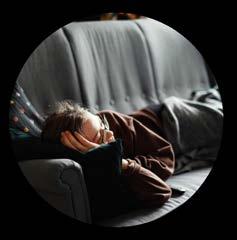
10
9
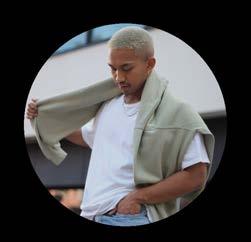

Trust your gut feeling. If something is off, it´s off. Walk up to the information desk or talk to a person in uniform to address what you have noticed. Better one time too many that one time short.
What’s the purpose of your travel?
Customs officers will investigate and possibly question you at the airport. Be ready to present any relevant documents like invitation letters or other relevant information like contact details of your hosts or final destination.
Everything different here?
Different country, different culture. Sometimes one can get confused with how things are done differently. Inform yourself prior to visiting a foreign country. Pick up a dictionary to say “Hi” or “Help” or “Thank you” in the local language. A local friend or colleague is able to help you out while you’re there.
12
Busted?
Handbag stolen, phone broken, injured. Make and keep copies of your documents in a cloud or with your family at home. Check suitable insurance options before your trip.
15
Excuse me, what is this?
13
How much is this?
Different countries have different currencies The exchange rates can vary. To get the most out of your money, check in with your local bank and if possible bring some with you for the first days at your new destination.
16
Do you want to call a lawyer?
Some countries are more strict in relation to misconduct, drugs or alcohol consumption. Make sure you’re aware of what might get you into trouble and where you can get help if necessary.
19
14 Exhausted?
Ok, you came to see as much as possible. Take time to cure jet lag, eat regularly and sleep enough to be able get the most out of your trip.
17
What´s your backup plan?
What if your airport pickup does not show up? How far is the closest pharmacy, restaurant, ATM, bus stop, conference venue from your hotel? Browse the internet before you arrive.
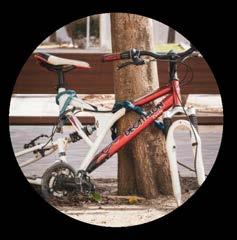
When visiting a different country etiquette can be different. Observe how the locals interact with each other. Ask for guidance in case you´re unsure about which behaviour is expected in the given context.
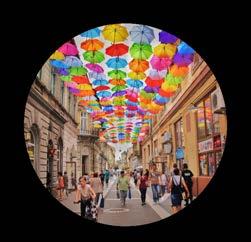
What, the flight was cancelled?
Alright, so the plan changed, now what… Take a breath. Sometimes things do not go as planned. Check the latest info, inform your folks or hosts about the delay, and get yourself a coffee or a duty-free treat.
18
Are you drunk?
Everyone on the plane has the same right to feel comfortable and well treated. Ask the flight attendant for assistance in case someone is looking for trouble but you’re not.
20
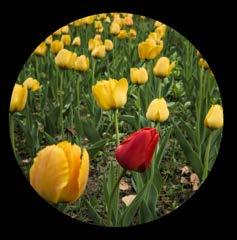

In three months, right?
Travelling gives you time to think, process and see things from a different perspective. Share your thoughts and experiences with family and friends. These conversations will make them proud of you and how you went to all these places on your own.
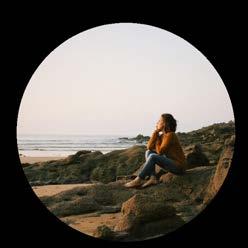
Anyonewho studied The Go-Between in high school can probably still recall the book’s opening line: “The past is a foreign country; they do things differently there.” As there was a two-decade gap between the end of my undergrad years and the beginning of my post-graduate studies—and as this story takes place soon after the former—please allow me to take you on a journey to a most strange, bewildering, foreign country indeed. The 1990s.
Within the span of less than six months, there was a confluence of events that shaped this writer’s life with a mind-bending degree of finality. I completed my bachelor’s degree and returned to Queensland from Melbourne, my mother passed away and my work contract came to an end. The universe seemed to be telling me to get away and see the world. Within no time at all, I found myself in a backpackers in London drinking a VB and listening to Cold Chisel.
After a month in London I was beginning to get low on funds, but all was well. I’d secured myself paid work at the hostel and Hyde Park in spring was delightful, if you didn’t mind all the lads taking their football shirts off and exposing pasty skin now that the sun was out.
The very next day after getting the job, however, I was being told to move on again. This time it wasn’t the universe telling me this, but rather a bunch of big blokes in black overcoats who looked and sounded like clones of the Krays. They told me and everyone else the hostel was closing down and we had fifteen minutes to sling our hooks and clear off.
Maybe it was another sign from the universe, I thought. Several months earlier, my aunt, visiting Australia from Scotland to see her ill sister, had invited me to look in on
her if I ever found myself north of the English border. As I trudged along the pavement with all my belongings on my back—at least, everything I owned in the northern hemisphere—I decided to take her up on the offer.
I’m pretty sure this advice is superfluous in 2023, but hitchhiking is dangerous and should not be undertaken. However, this was the nineties and attitudes were very different.
I resolved to ring my aunt from Perth to save on the longdistance call box charges. I’d only ever known one person with a mobile phone in those days. It was the size and weight of a house brick and came in a carrycase. She kept it in the boot of her car in case said car ever broke down.
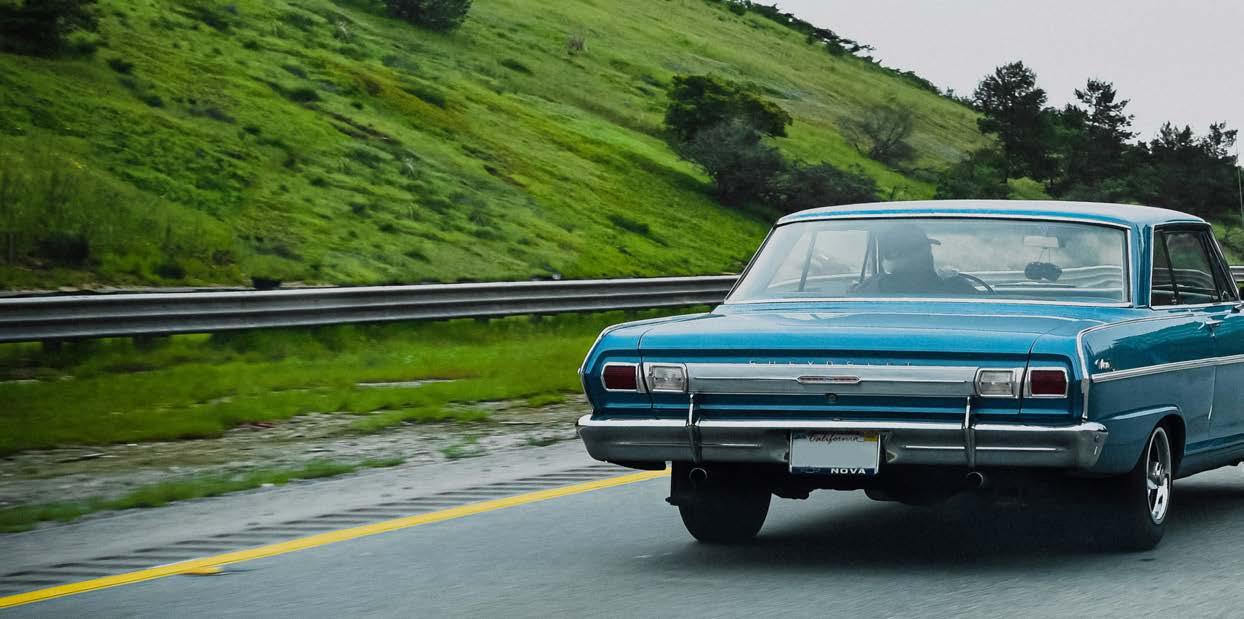
I got as far north as Northampton when a guy with a ponytail loading boxes into the back of a bright yellow transit van offered to take me as far as Manchester if I helped him with the boxes. I obliged and climbed into the back of the van with the boxes I’d just helped to load. There was a mattress in there as well and he said I was welcome to it as I looked tired. Remembering it now, it all sounds reminiscent of a similar scene with Buffalo Bill in The Silence of the Lambs, but that didn’t occur to me at the time. As I closed my eyes and heard him start the motor, it definitely did occur to me that I hoped he wasn’t going to murder me, but I was too exhausted to care. It didn’t occur to me that they might not even have been his boxes.
Getting out of Manchester seemed to take forever. By the time I finally did get a ride out, my eyes were red and throat hoarse from exhaust fumes. I’d nearly snaffled one ride, but the driver kicked me out
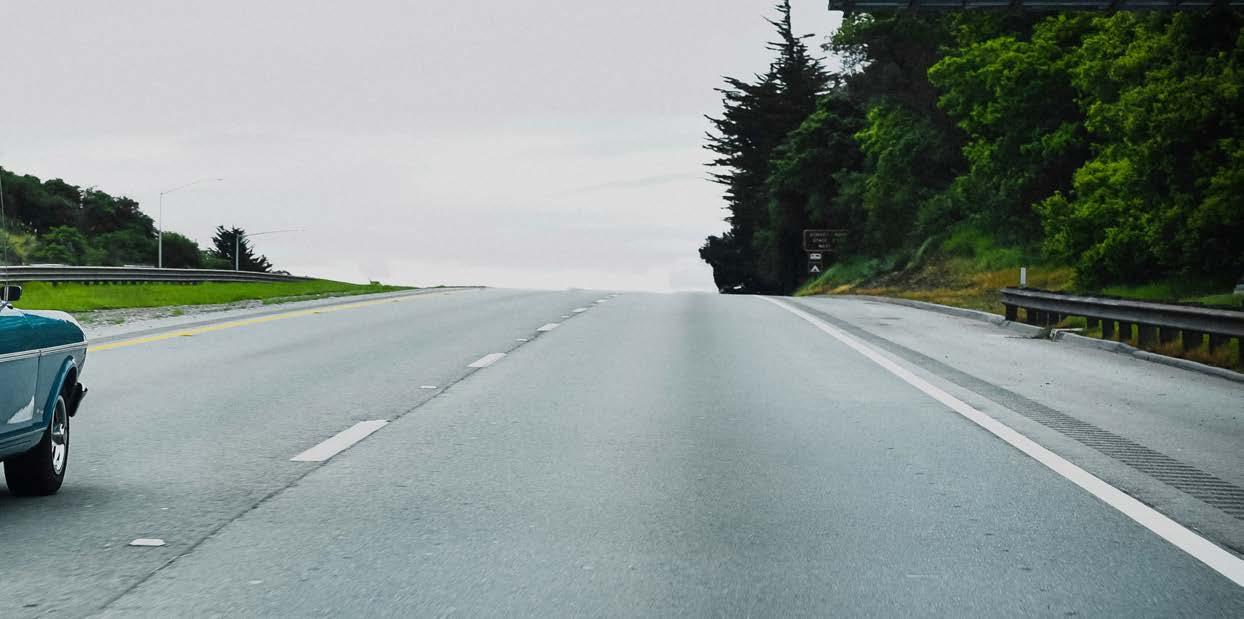
immediately when I revealed I couldn’t give him precise directions to Sheffield. I hadn’t wanted to go anywhere near Sheffield anyway, but by that stage had just been desperate for a reprieve from all the carbon monoxide.
By the time I did get a ride it was the dead of night and freezing. Eating Jaffa Cakes from a service station, I found myself chatting to a kid standing next to me while he munched on a Mars Bar and we both gazed idly at our warm breath spiraling upwards in the cold air. He claimed to be a mercenary and to have just returned from Johannesburg where he had been employed as a security guard for a year. Quite aside from the moral reprehensibility of this statement, he looked no more than sixteen and was so pale as to be almost translucent rather than sporting a suntan. I bid him a polite farewell just in case the “mercenary” was armed and headed into the roadhouse where a truck driver got talking to me, bought me a hot meal and said he was headed up to Newcastle. Red flags galore would be waving frantically and myriad alarm bells going off in unison if the same thing happened today but, again, it was the nineties.
I arrived in Newcastle unscathed, but during the ride from there to Edinburgh it was actual alarm bell time, at least in my head. The next truck driver became incensed with me because I kept nodding off rather than talking. Evidently, he’d wanted a travelling companion to keep him awake during his night run. I seemed in imminent danger of him either falling asleep at the wheel or attacking me for not being much of a conversationalist.
Eating chocolate Hobnobs on the forecourt of another service station outside Edinburgh to calm my nerves, a bit rattled from the last experience and
unwilling to risk another ride from a lorry driver, I set off to find a bus stop so that in the morning I could ride to Perth in style. Walking in the pitch darkness in the middle of nowhere. I must have looked a tad suspicious, at least to the occupants of the police car that pulled up beside me. In those days the police vehicles with red stripes running along the middle of white paintwork were nicknamed “jam butties”, and the thought of this would have made me hungry had I not just polished off the Hobnobs.
I was given a ride by the cops into Edinburgh and the nearest bus stop. The pungent smell emanating from it was decidedly unpleasant, so it really was a good job the biscuits were gone, or I’d have lost my appetite.
My aunt was lovely and welcomed me with open arms, despite the fact that I must have smelled decidedly unpleasant myself after two-and-a-half days on the road. I had a hot bath and slept for nineteen hours. Years later, after COVID lockdowns, I’m travelling again. Sydney earlier this year, Darwin at the end of the month. Maybe even another overseas trip after I’ve finished my doctorate. Unfortunately, my aunt passed away just before COVID hit, but I’ve still got equally lovely relatives in Perth who reckon I look just the same, only older and with shorter hair. Wherever I go, I won’t be hitchhiking – and I won’t just be eating biscuits.
‘A tale of burly bouncers, bogus bodyguards and biscuits’ (With apologies to Jack Kerouac)“Wherever I go, I won’t be hitchhiking – and I won’t just be eating biscuits”.
 By: Mahli Leighton
By: Mahli Leighton
Are you looking for some fun and money conscious activities to do on the Gold Coast? As a local, here are some places and things to do that I recommend and think can be fun outings on a free weekend or when you have some time spare and want a change of environment!
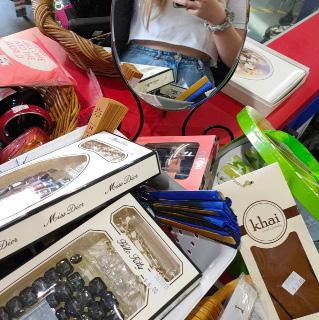
Looking for a bargain? Op shopping is the way to go! The Gold Coast has a collection of op shops to go thrifting and hunt for cool and vintage finds you can’t buy from the store. I recommend you make a day out of it and try hit as many locations as possible for the best finds and fun! The most popular Op Shop chains are RSPCA, Animal Welfare League, Salvos, and Vinnies. Looking these up in google maps will help you find at least one op shop near you! Below is a list of some of the op shops around Southport that are all along the same street if you wish to spend the day there and grab a bubble tea nearby and potentially stop by a very cute book store called Antique & Collectors Books at 3/162 Scarborough St, Southport QLD 4215.
Railway St, Southport QLD 4215 & 15 Nind St, Southport QLD 4215


For a breath of fresh air, head to our local Botanic Gardens! Take a leisurely morning or afternoon walk and see our wildlife in their natural habitat, with birds of all kinds you are sure to spot on your visit. With barbecues and plenty of cute areas to sit and relax, take your friends, family, or significant other on a picnic or follow the trail and read about the surrounding vegetation and discover the interactive gardens that lead you through the beds of flowers.
Address: 230 Ashmore Rd, Benowa QLD 4217
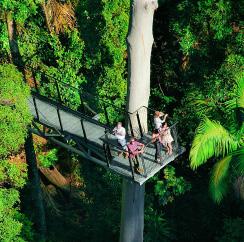
For a change of scenery, take a day trip with your friends up to Mount Tamborine! Other than the famous fudge and cute restaurants, I recommend going for a bush walk, with many to choose from and a big rainforest to explore. There are so many tracks accommodating to all. My personal favourite for a short yet sweet ending is Curtis Falls Walking Track but check out the Mount Tamborine Website to see what will suit you best! Whether you want to birdwatch, learn more about the Australian flora and fauna, or just want some nice pics, this is a day trip that everyone should experience. After your treck, head to Hang Glider Launch and Lookout and grab a meal on the way to watch the sunset to end the day.
Address: 14-18 Dapsang Dr, Eagle Heights QLD 4271
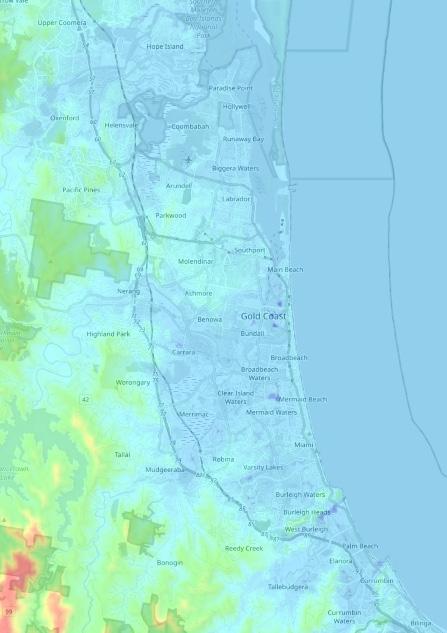
If you are looking for a night out to fuel an exquisite taste and satisfy a desire for something new, the Miami Marketta night market has a large range of street food and is open free to the public every Wednesday, Friday and Saturday from 5pm. Grab a drink at the cool retro bar they have on site and listen to the live music to jam out to. Gigs are also held there which you can get tickets for if you are down for a boogie or a cool and different way to spend your evening with your mates.

Address: 23 Hillcrest Parade, Miami QLD 4220
If you haven’t yet been to our local Home Of The Arts (HOTA) it is definitely a must do! HOTA hosts a number of different activities to enjoy such as exhibits, shows, visual and performing arts, galleries, and much more. It is the premier cultural facility and has much to enjoy. And if the museum is not your forte, HOTA is located right next to Evandale Parklands with a lagoon in which you can take a dip if it’s hot or a stunning walking trail that takes you around the lake and has a nice view of the cityscape and complimenting scenery.
Address: 135 Bundall Rd, Surfers Paradise QLD 4217

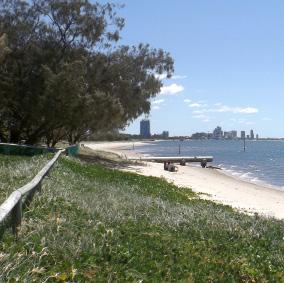
Get ready to get out and about at the Broadwater Parklands, a beautiful strip of coastline open to the public located across from Australia Fair shopping centre, overlooking the Gold Coast Broadwater. Whether you want to explore the area and hire Lime bikes for a afternoon cruise or enjoy a cup of coffee and walk on the jetty, the Broadwater Parklands is a perfect place to visit if you are looking for a bit of everything. With plenty of picnic areas and places to swim, there is also beach volleyball (bring your own ball) and during the summer there is often Aqua Splash (an on-water obstacle course). I recommend also checking their website as often there is events that are open to the public as well.
Address: 169 Marine Parade, Southport QLD 4215
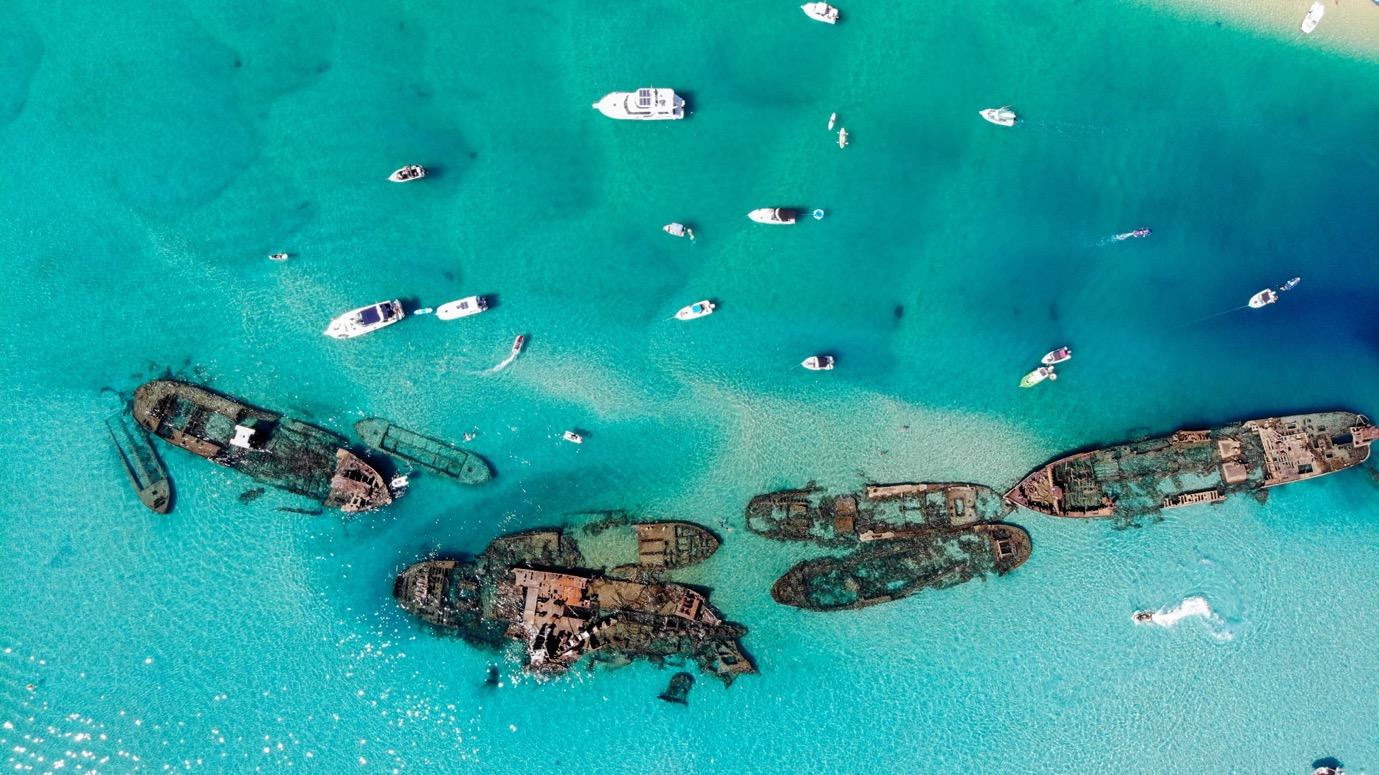
 Figure 1: Moreton Island Wrecks
Figure 1: Moreton Island Wrecks
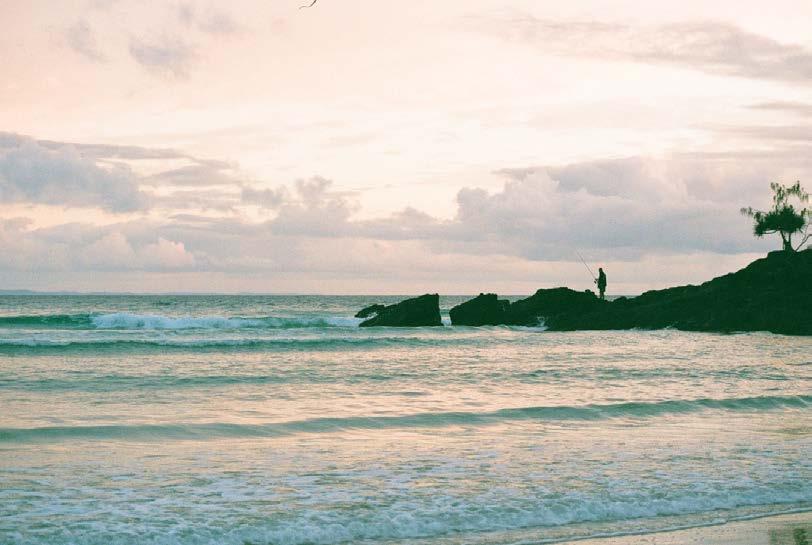
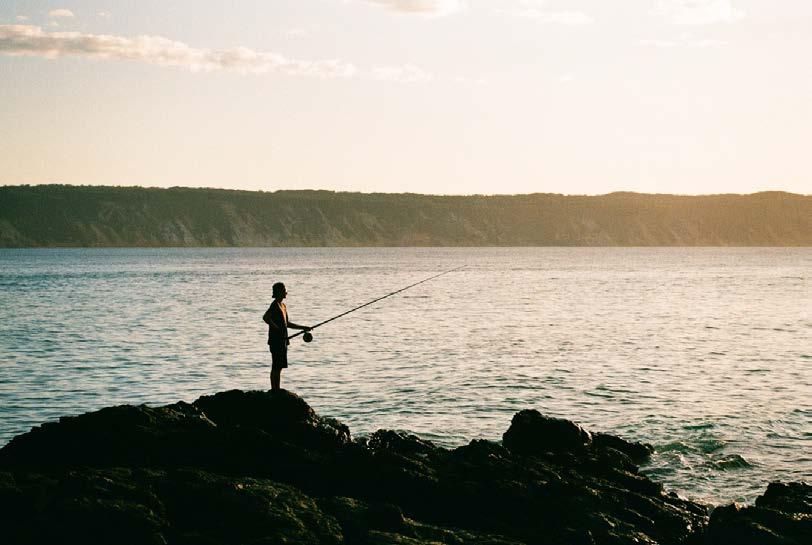
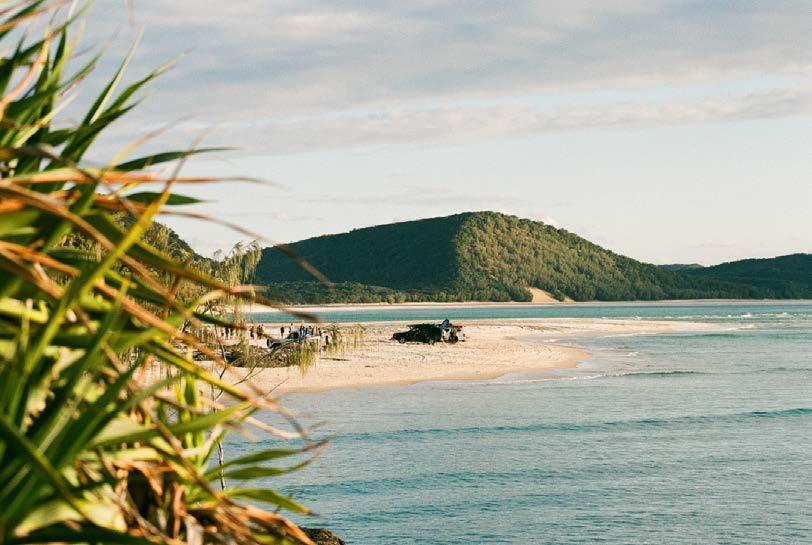
 Figure 2 Double Island Point
Figure 3 Fisherman in the morning Double Island point
Figure 4 Fisherman in Double Island point
By Elka Devney
Figure 2 Double Island Point
Figure 3 Fisherman in the morning Double Island point
Figure 4 Fisherman in Double Island point
By Elka Devney
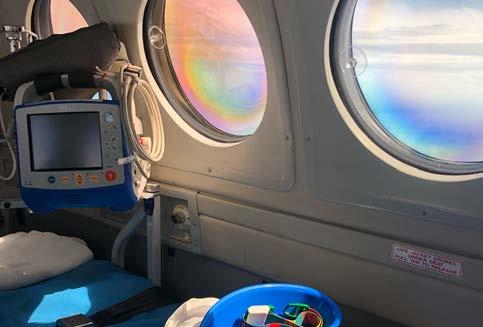
Dania Khawaja isn’t your average medical student. She’s learnt how to land a plane from the cockpit of her first flight and inserted cannulas between turbulence thousands of feet in the air. She’s stepped outside the city limits and travelled to remote communities in North Queensland, many of which you won’t find on the map. Unlike her peers who applied to their nearest hospital, Dania completed her final year rotation with the Royal Flying Doctor Service (RFDS) in Cairns, developing a newfound appreciation for rural medicine.
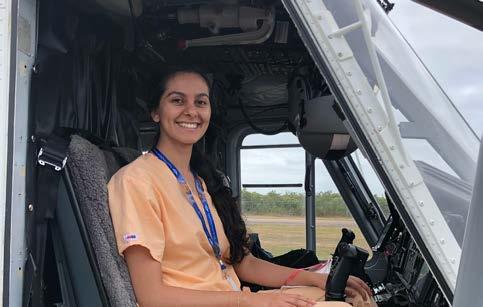

“There are many different dynamics of what to expect regarding regional healthcare,” she says. “Ordering investigations such as blood tests require patients to travel over three hours to a hospital whereas it takes 5 minutes in the city. It was nice to see, experience, and appreciate this difference as a future doctor.
In addition to aeromedical retrievals, the RFDS provides essential primary and preventative healthcare services in regional Australia. Caring for over 20,000 patients in 2021, RFDS Cairns flew more than 1.2 million kilometres. Operating 24 hours a day, seven days a week, the RFDS delivers critical support to those who need it most. When Dania applied for a placement in the program over a year ago, she never expected to be accepted as the medical student rotation is highly competitive. She is the first Bond University student to be placed on the Cairns base. Dania describes the experience as the highlight of her medical school placement.
“Arriving to the base at six am every morning, I had no idea where or when we were flying,” she says. “It was interesting to see the dynamics of how doctors, nurses, pilots and aeroengineers all work together. While the RFDS team is small, it is full of brilliant people making a difference.”
As GP shortages continue to grow across the country, Dania believes metropolitan doctors don’t know how desperate regional people are to access healthcare. While the RFDS transports patients to hospitals, they still require acceptance from doctors to be treated. “Many doctors who haven’t experienced medicine outside the city don’t see why regional patients need transport and therefore won’t accept them,” she says. “This experience has been important, as one day I’ll be the doctor receiving the call to accept patients.”
Finishing her degree in December 2022, Dania hopes to specialise in paediatrics. Seeing the change doctors can create to regional healthcare, in the future she would like to complete locum work in rural communities.
“Working in a regional area is very fulfilling and an experience I think all doctors should have.”
Bond University medical student, Dania Khawaja, flies outside the city limits to experience healthcare in rural and remote Queensland with the Royal Flying Doctor Service.In May 2022 I travelled to Geneva, Switzerland for the United Nations Office for the Coordination of Humanitarian Affairs, ‘Humanitarian Networks and Partnerships Week’.
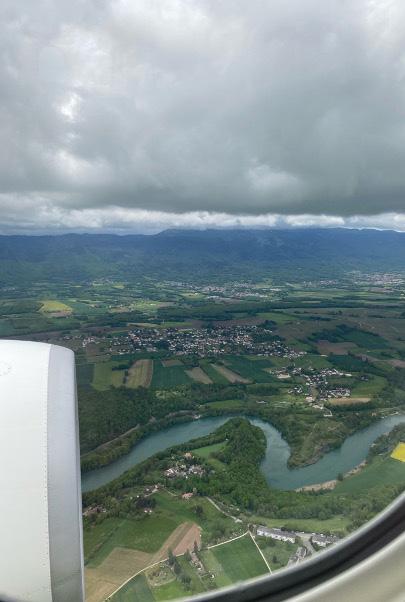
I enjoyed immersing myself in the French language and Swiss culture, learning the region’s rich history, and coupled with my dealings with the United Nations and World Health Organisation –I was in IR student heaven.
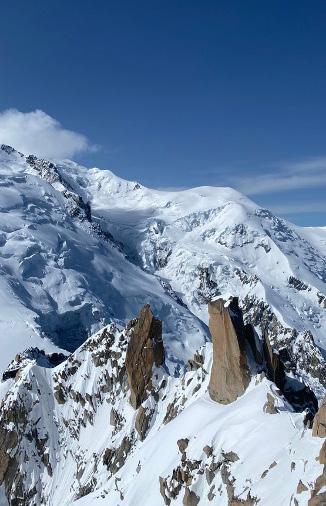
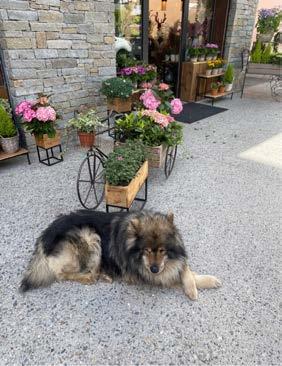
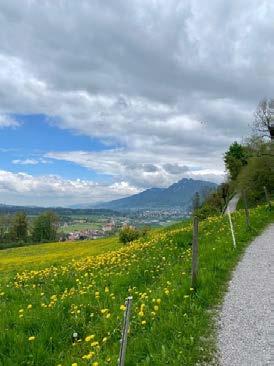

I am eager to return to Geneva in a diplomatic role after my studies at Bond.
Currently, I am living in Vanuatu under the New Colombo Plan Scholarship Program (‘NCP’), a flagship initiative of the Australian Government. Over the next 16-18 months I will be studying, interning, and exploring the Indo-Pacific, namely Vanuatu, India and Japan. It is the opportunity of a lifetime, and I am excited to have diverse experiences and build new relationships. For those who do not study International Relations or a similar course, the NCP may be all but foreign to you, but is not only for people with an interest in foreign affairs. As my fellow Scholars are aware, the NCP Scholarship Program changes you forever. Below, I explain the Program, the application process, and the doors it can open in your future.
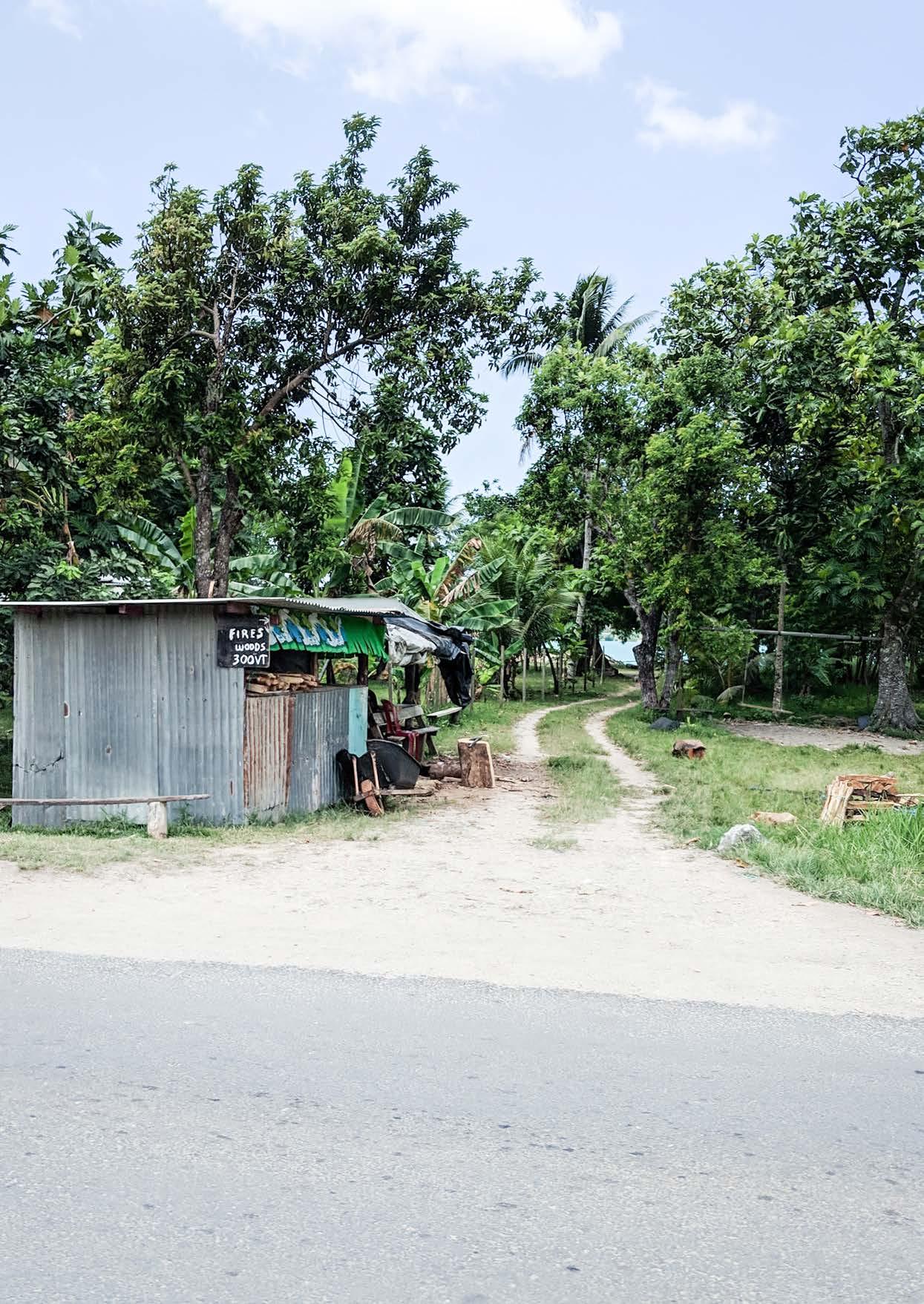
The New Colombo Plan was the brainchild of Julie Bishop and a Department of Foreign Affairs and Trade steering committee in 2014. The Plan can be bifurcated into two sections – the Scholarship Program and the Mobility Program – both of which are designed to deepen and broaden the engagement of the next generation of Australians in our region, the Indo-Pacific.
Our focus, the Scholarship Program, provides access and financial support for Australian undergraduates in any program to study abroad at university, complete language training and undertake internships in any of 40 ‘host countries’. These countries are all located in Australia’s Indo-Pacific neighbourhood, from India in the west to Mongolia in the north and the Cook Islands in the east. During the application process, potential Scholars must specify the country/ies they hope to study, work, and live in and demonstrate the benefit of their proposed Program in relation to their studies, career aspirations and the broader goals of the NCP.

The benefits of the Scholarship are extensive, with the entire monetary value being approximately $75 000 per Scholar. This includes flights, any necessary course fees for study or language training, a monthly stipend of $2500 to cover living expenses and a $1000 mental health allowance.
Non-pecuniarily, its value cannot be measured. My experience has barely started but already it has connected me with academics, industry leaders, mentors and fellow Scholars who aspire to lead, transform, and contribute to Australia across a plethora of sectors, industries, and issues. The access it provides to the upper echelons of Australian and foreign governments, multinational corporations and firms, international organisations and more is invaluable.
For Scholars with a well-planned Program, the experiences, connections, and knowledge that you accumulate will separate you from the pack when entering the workforce. For those who pivot careers – a change sometimes caused by the Scholarship itself – the relationships formed and the skills developed are those that will reap rewards well into the future, regardless of the nature of the endeavour.
by Josiah NealKeep in mind, I have barely started my NCP Scholarship Program, so I do not want to overstate my credibility here. Instead, I asked some Bondy NCP Alumni to answer a few questions about their experiences:

Degree: Bachelor of International Relations
Host Country/ies: South Korea and the Maldives (2022)

Graduation: December 2022

Current Role/Aspirations: Commencing work with a defence consultancy in 2023
Summarise your NCP experience in 3 words: Life-changing, challenging, and unique


What was the most transformative experience while on program? Travelling to the Maldives to intern with a women’s rights NGO called ‘Woman & Democracy’. I learnt about the struggles women face in the Maldives and the courageous work W&D are doing to champion women’s rights.
What was the biggest challenge of travelling solo around the Indo-Pacific? Being my own support system when things hadn’t gone my way was the biggest challenge, but it helped me to develop independence and resilience.
Who would you recommend apply for the NCP Scholarship Program? Anyone who is eager to see the world and gain a deeper understanding of other cultures and where Australia fits in to the picture. I can guarantee that the experience will change you in the best way possible.
Degree: Bachelor of Laws and Bachelor of International Relations
Host Country/ies: South Korea (currently)




Graduation: 2024

Current Role/Aspirations: Hoping to enter the legal profession post-graduation with a view to enter the diplomacy or public international law fields in future.
Summarise your NCP experience in 3 words: Transformative, adventurous, and memorable.
What was the most transformative experience while on program?
It’s so difficult to pick a single experience! I think getting to know the Korean culture and the cultural similarities and differences Australia has with other countries. It was eyeopening to experience both the positives and negatives of Korean culture, and to learn about their relations with neighbouring countries.
Exposure to Westerners was equally transformative to my Korean friends and their families. When I attended a wedding, a few of my friends’ older family members mentioned they had never spoken to a foreigner before and were scared, but since they met me, had much more confidence to interact with foreigners. I was shocked a society could be so homogenous that some older people hadn’t even spoken to someone outside their nationality or ethnic group before.
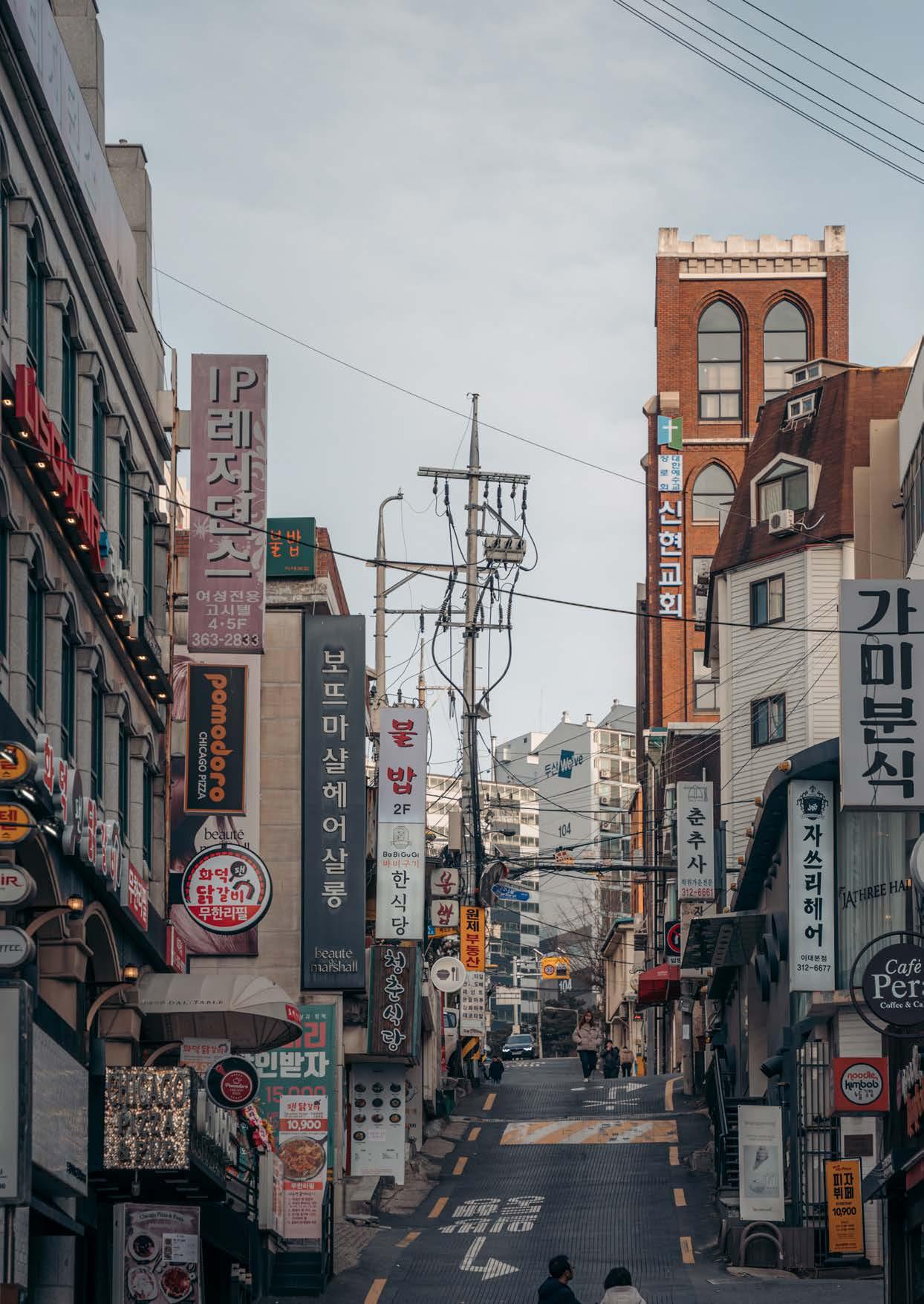
What was the biggest challenge of travelling solo around the Indo-Pacific?
I think constantly having to remain adaptable over a long period can be challenging. It can be difficult to adjust to a component (e.g., language training, internship, or university study) for it to end shortly after, and for a new one to begin. But this challenge is also part of the beauty of the program; the variety means you can never really feel bored or stagnant.
Who would you recommend apply for the NCP Scholarship Program?
If you have a sense of adventure and even a remote interest in the Indo-Pacific and Australia’s relationship with it, you’re already a good candidate. Outside of Australia I had only lived in/visited Europe and the US, and I didn’t have as much connection with any Asian cultures as other NCP colleagues, so I wasn’t sure if Asia was really the right choice, or how well I would fit in living here.
But upon arriving, I have realised how underrated Asia is, particularly amongst young Australians, in terms of doing exchange or living here. So, if you’re looking to broaden your world view, learn about some of Australia’s most important strategic partners and experience things you couldn’t in any other context, the NCP is a good way to go!
To find out more about the New Colombo Plan Scholarship Program, visit https://bond.edu.au/current-students/opportunities/new-colombo-plan

Degree: Bachelor of Laws (Honours) and Bachelor of Biomedical Science
Host Country/ies: Hong Kong and Nepal (2019/2020)




Graduation: December 2020
Current Role/Aspirations: Working across a range of legal areas as a lawyer with Norton Rose Fulbright Brisbane.
Summarise your NCP experience in 3 words: Enriching, unexpected, and transformative
What was the most transformative experience while on program?
Studying international law in Hong Kong was a dream come true and without a doubt it hugely influenced my career trajectory.
What was the biggest challenge of travelling solo around the Indo-Pacific?
I had the unique experience of studying in Hong Kong during the peak of its civil unrest and interning in Nepal when COVID first shut down the world. This came with obvious challenges, especially as someone who’d never spent more than a couple weeks overseas, but DFAT [Department of Foreign Affairs and Trade], your case managers and fellow scholars provide unmatched support.
Who would you recommend apply for the NCP Scholarship Program?
Anyone and everyone! One of my favourite aspects of NCP is that it caters for everyone, be it future artists, doctors, analysts, or authors. You will connect will people from all. walks of life - it’s not just for law or IR students. While the application process was quite gruelling, the experience is worth every second. Bond’s success rate for applicants is extremely impressive way

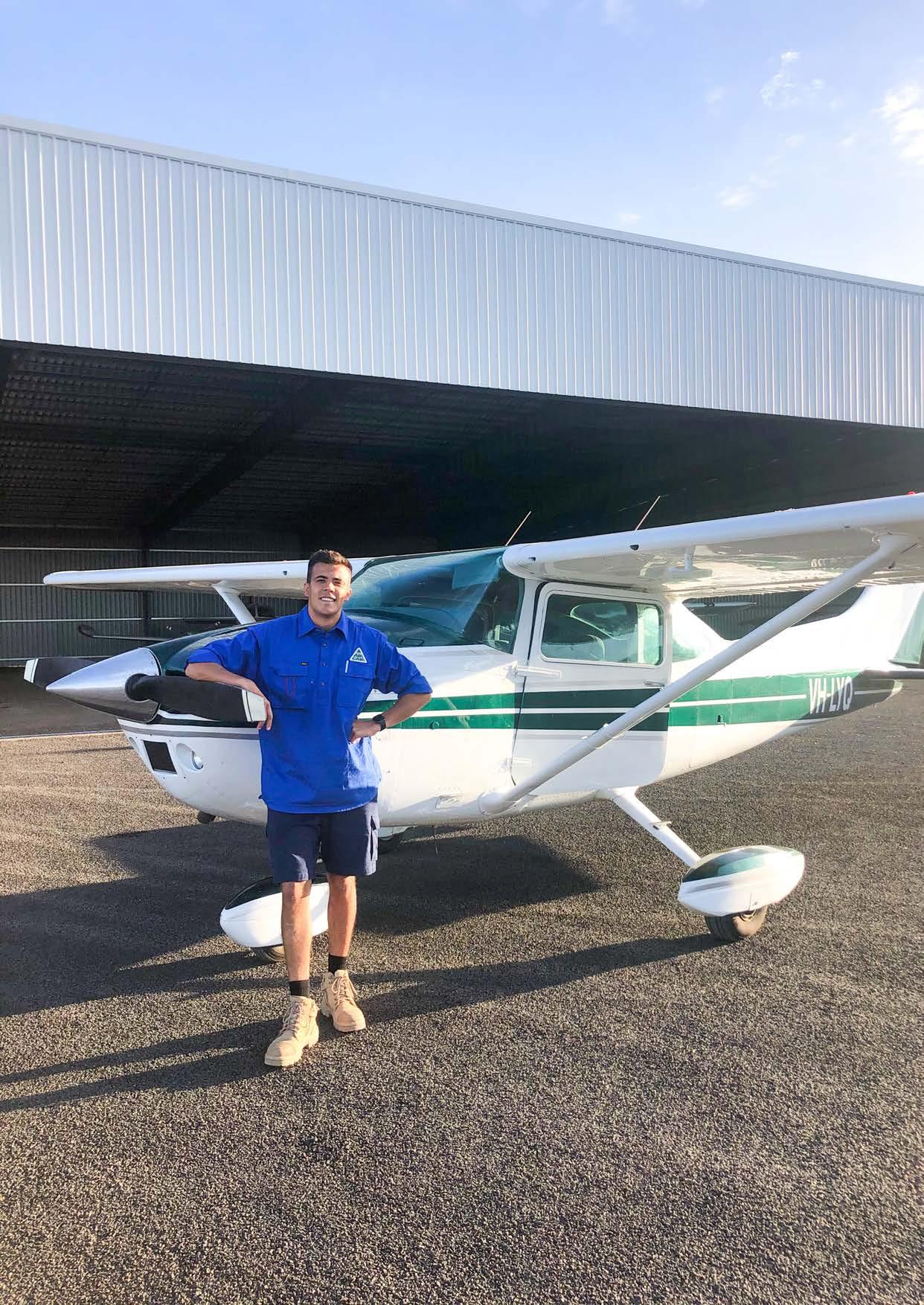

To Shea Garcia, agricultural pilots are cowboys who fly by the seat of their pants. Except when COVID-19 brought international runways to a halt in 2020, these cowboys were the only ones allowed to take off. Growing up in the city, you can’t blame Shea for his sheltered perception of country pilots and the agricultural industry. However, since moving to Moree in North-West NSW, he’s developed a newfound admiration and respect for the industry.
“I’m currently working as a charter pilot for Moree Aircair Aviation, and I love it,” he says.
“There is a massive demand within the regional sector for charter flights, so I’m flying clients anywhere from Sydney to the Northern Territory. I’ve learnt so much from the people I’ve flown with. They have a wealth of knowledge about the agricultural industry that is just amazing.”
After graduating from UNSW during the pandemic, Shea wanted to fly worldwide as an airline pilot. However, as the pandemic continued to keep flights grounded, Shea needed a new plan. Although he never thought plan B would lead him to live and work in the heart of Australia’s cotton industry as an ag pilot.
“Since moving to Moree, not only do I now know what cotton looks like, but I’ve also realized that ag pilots are 10 per cent pilot and 90 per cent farmer,” he says.
“Coming from a non-agricultural background, I’ve had to catch up on that 90 per cent of knowledge to understand my day-to-day operations.”
Shea has been inspired by the farmers, spray pilots, mixers and agronomists who work in synergy to achieve a common goal. They each want to produce the best yielding crop. Working at Aircar has exposed Shea to many opportunities that wouldn’t be available in the city.
“I just got back from ariel surveying in the Northern Territory, and that is something I never thought I’d hear myself say,” he says.
“During my degree, I saw photos of spray planes, but it wasn’t until I sat in one that I appreciated how much work they can do. Currently, I’m training to fly our Cessna 340 pressurized twin aircraft. This will allow me to fly clients higher and faster.”
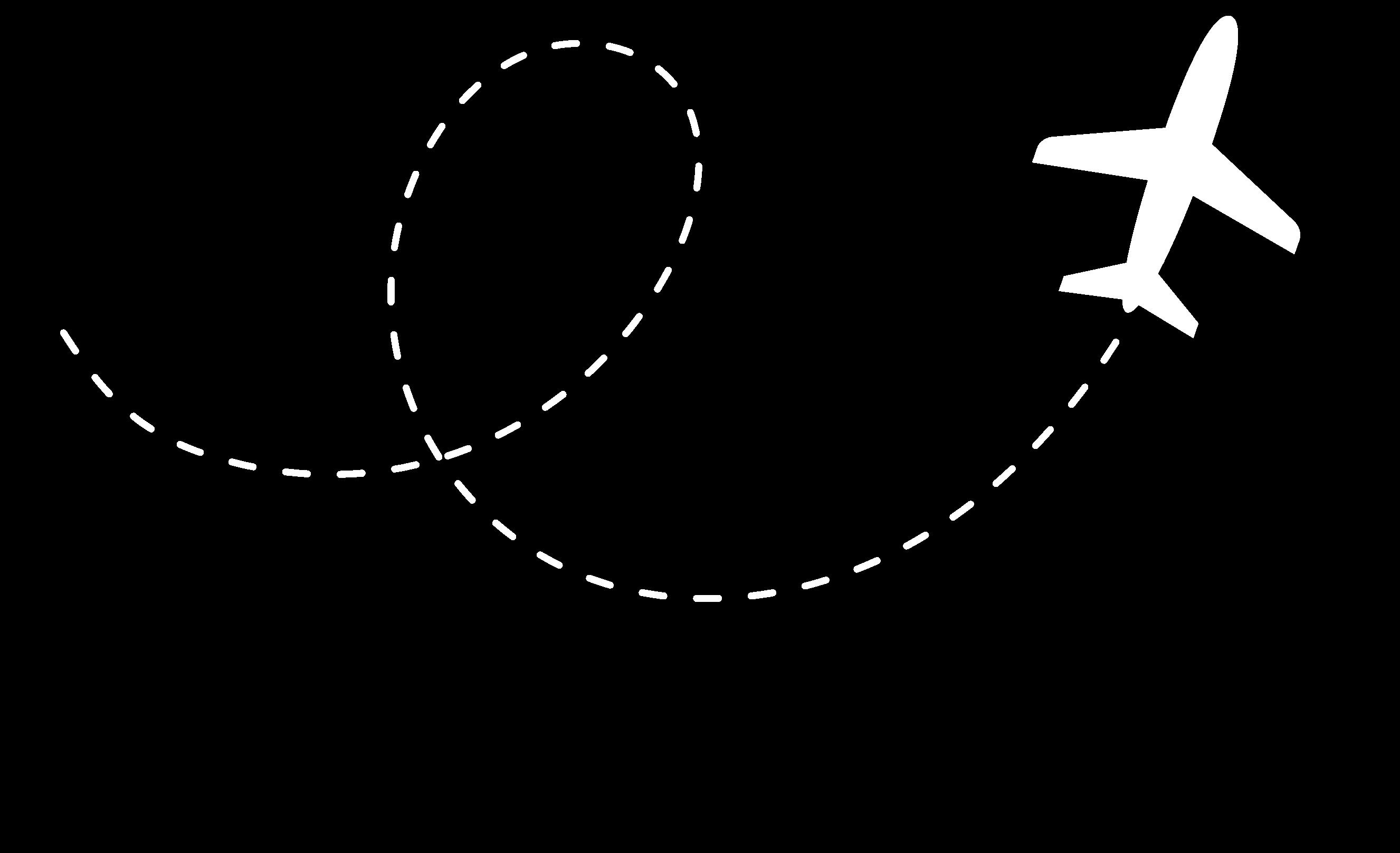
Shea stepped outside his comfort zone when he moved over 600 kilometres from home, but it was his best choice he’s ever made.
“At Aircair, I continue to learn, fly and experience new things,” he says. “Ag pilots aren’t cowboys, they’re some of the most experienced and passionate pilots I’ve ever met.”
SheaGarciaditchedthecitysmoketoexperienceAustralia’sagriculturalindustry fromaboveasaCharterPilotinMoreeNSW.
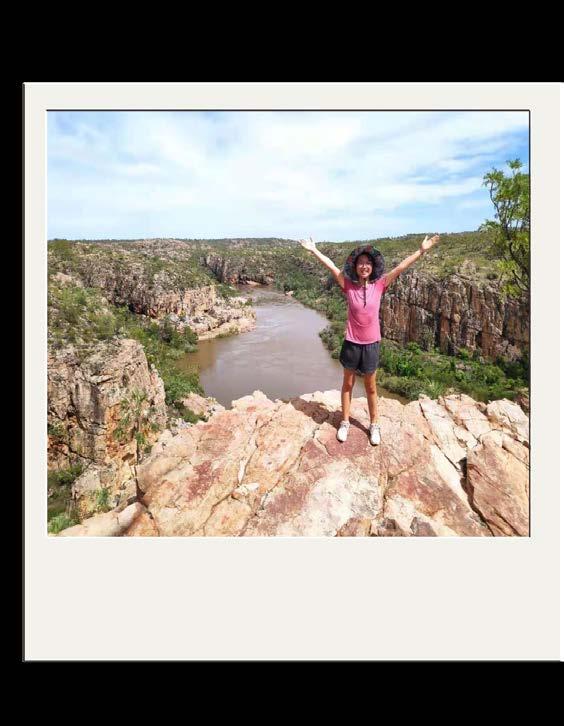
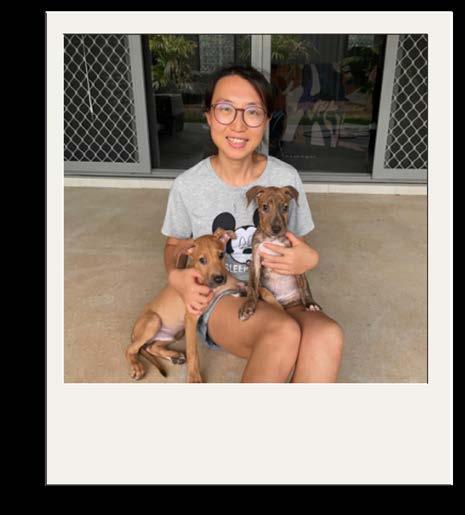

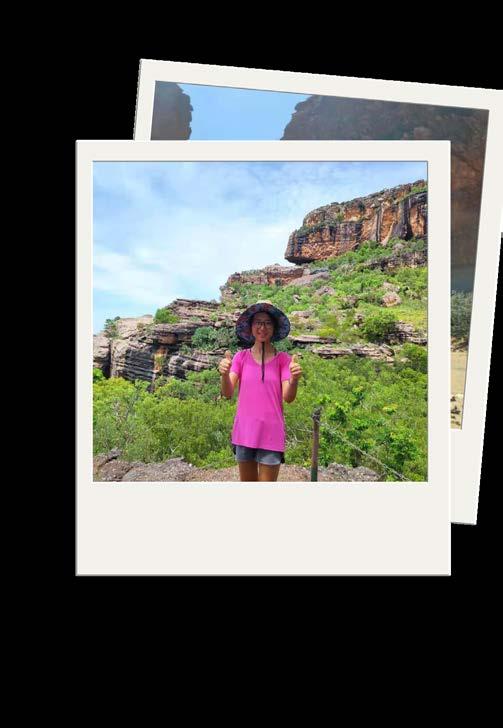
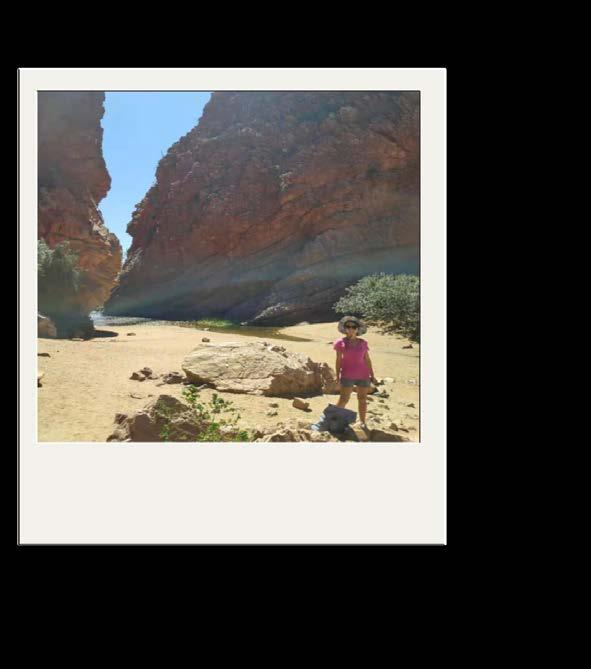
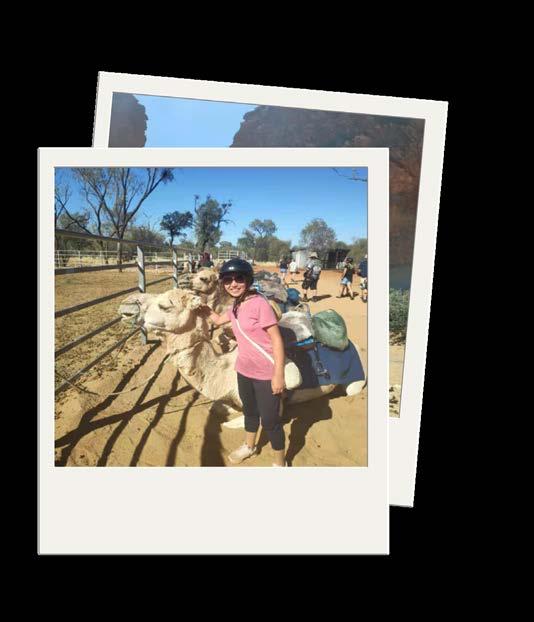

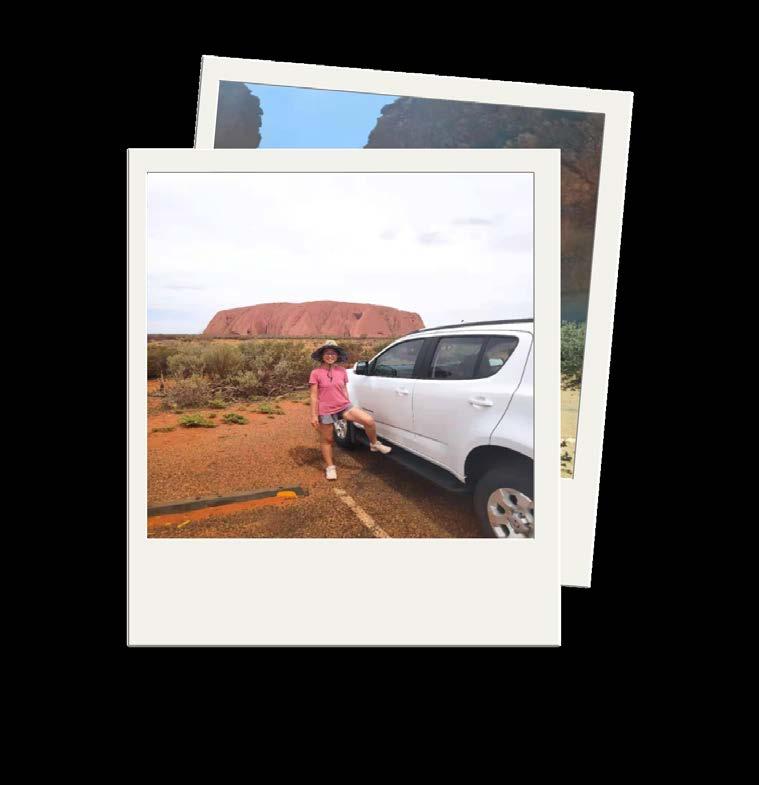

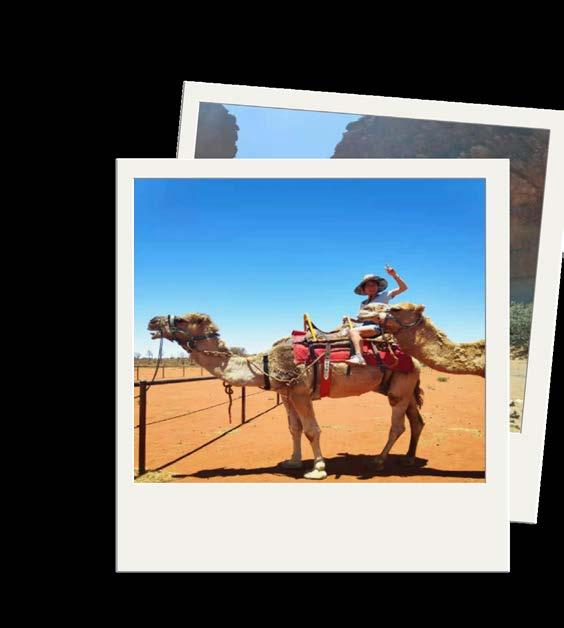

I am Maggie (Yan Wang), originally from Beijing and now an Australian living in the NT. My accent is heavily mixed with Beijing, Kuala Lumpur, QLD, NSW and NT English. I Love 'laughing' and making new friends, helping people, nature, and animals (especially dogs).










 A road trip experience from darwin to Darwin Kakadu
katherine
A road trip experience from darwin to Darwin Kakadu
katherine
Please always be nice to the environment!



Darwin is the tropical capital city of the Top End, traditionally owned by the Larrakia people, very close to Bali and a few other tropical islands and has vast numbers of immigrants from Europe, South & Southeast Asia, and China who also contributes to the versatile cultural lifestyles up here. Honestly, Darwin is really famous for two main things, the saltwater crocodile and pub drinking.So if you only plan to visit Darwin for 1 or 2 nights, you probably should get up at a decent time in the morning, check-in at the Crocosaurus Cove which is located right in the heart of the CBD, and enjoy the company of the modern dinosaurs plus plenty of world renowned venomous snakes. Afterwards you should treat yourself a super yummy lunch or afternoon tea at the waterfront recreational centre or casuarina shopping mall. However, once the night falls, this is when the party begins, and Darwin has this really unique culture that you do not want to miss! But always watch out and be safe!
After departing from Darwin, the next trip stop would be Kakadu. This national park is about 250km outside of Darwin, and has an approximately land size of 20,000sq km. Kakadu was traditionally owned by the Bininj people, however, today, this park is a renowned world heritage site classified outstanding of both cultural and natural universal values. Once you drive passing the ‘Welcome’ sign of Kakadu, you will be amazed by the woodlands and mountains around you, then you do not want to miss the stop at Nourlangie where you can experience the traditional rock art as well as a breathtaking rock walk to get to the lookout point. On the way out of Kakadu to Katherine, a little stop at the Alligator river bridge during the high tide hours definitely worth your effort, because you might spot hundreds of salties try to catch the barramundis in the river, it is definitely worth the time!
Katherine would be the first ideal resting stop after you are out of Kakadu. However, Katherine does not have super ‘clean’ and comfy hotels, so if you are those types of people who really care about Google reviews and star ratings, you might have to overcome of it and accept the country styles of the NT. However, you can find a few fast food stores and grocery supermarkets in the town centre, but maybe just some snacks and drinks that you carried out from Darwin plus a hot cup of instant noodles would save you for the night!
The next morning, you will want to wake up early for the morning hike to Pat lookout in Nitmiluk, you definitely do not want to miss it as the picture’s will tell you why. So Nitmiluk is about 30km away from Katherine which has a size of 2,920sq km. It is consisted of 13 deep sandstone gorges which can be seen as beauty blended with the natural wonder.
Tennant Creek would be another quick stop on the way down to the Red Centre, again it would be similar to Katherine, but maybe worse according to living standard and food quality, so maybe you really just want to spend the night with drinks, snacks, instant cup noodles and a really enjoyable movie.
Need to depart early the next morning from Tennant Creek, because it would take about another 5 hours to get the Red Centre - Alice Springs. This town is extremely relaxing what can makes people feel that the watch can be rewound for at least 1 to 2 hours. Heavily influenced by the European architectural and cultural styles, this town has a wide range of accomodation, good dining options and travel connections. But did you know that Alice Springs is right near the desert park? The answer is yes, and it takes only about 10 minutes to drive from the town centre to the desert park. Obviously, there would be quite a few impressive desert hiking trails to choose from Google or even the local hotel travel guide, but honestly, you really do not want to miss the stop at Simpsons Gap, and the peaceful woodland trail right next to it. We all know desert nature is impressive, but we can not bring the ‘nature’ with us, however, this part of desert can really release our stress and help us to compromise with our own thoughts. Really make a stop or it could be a life regret!
Ah! Something really important was missing! What is it? Ah ha, camels! Of course we forgot to mention them. So they are the actual ‘permanent residents’ of the desert, and in the past, they were the only desert ‘vehicles’ for the locals. So, if you want to know them more, go to the local camel farms, have a ride with them and caress them while you are on them!
Leaving Alice Springs for the next stop Kings Canyon. So Kings Canyon is about 323km away from Alice Springs, and it takes about 5 hours to drive from Alice Springs to the Canyon. However, one good thing about this stop is that it is actually in the same direction towards Uluru except we do need to make a turn in the middle other than continue straight to Uluru. Obviously, this is a MUST see and breathtaking site again, but odd with the others, we will immediately be amazed even we only just see it from kilometres away. The 6km rim walk of the Canyon takes a few hours to complete, however, if you are afraid of the height, and try to save some time as well, you definitely can take their unique helicopter ride to have a glimpse of this beautiful site.



Leaving Kings Canyon to our last stop- The really heart of Australia- Uluru.
So Kings Canyon is about 300km from Uluru, and it takes about 4 hours by car. Uluru is a world heritage- listed icon, located in the very heart of Australia. It is not only an immensity rock which constantly changing its colour during the day, but also a cultural and sacred site for the local aboriginal people. Maybe try to do the base walk at Uluru, although it is a bit distance, but it is really an easy walk. However, please always remember to respect the site and the local aboriginal people! Please be quiet and do not take photos at certain locations (follow the signs there)!
The next day, maybe it would be a really good idea for you to get up earlier for Kata Tjuta as some of the walking trails would be closed earlier due to the desert weather effect. It is a bit journey to complete the whole trails, but at the end, after you complete, you would feel the real ‘satisfaction’. So it is about 56km between Uluru and Kata Tjuta which takes about 40 minutes by car. Once you arrived, please be quiet and respect the locals by following the signs there!

